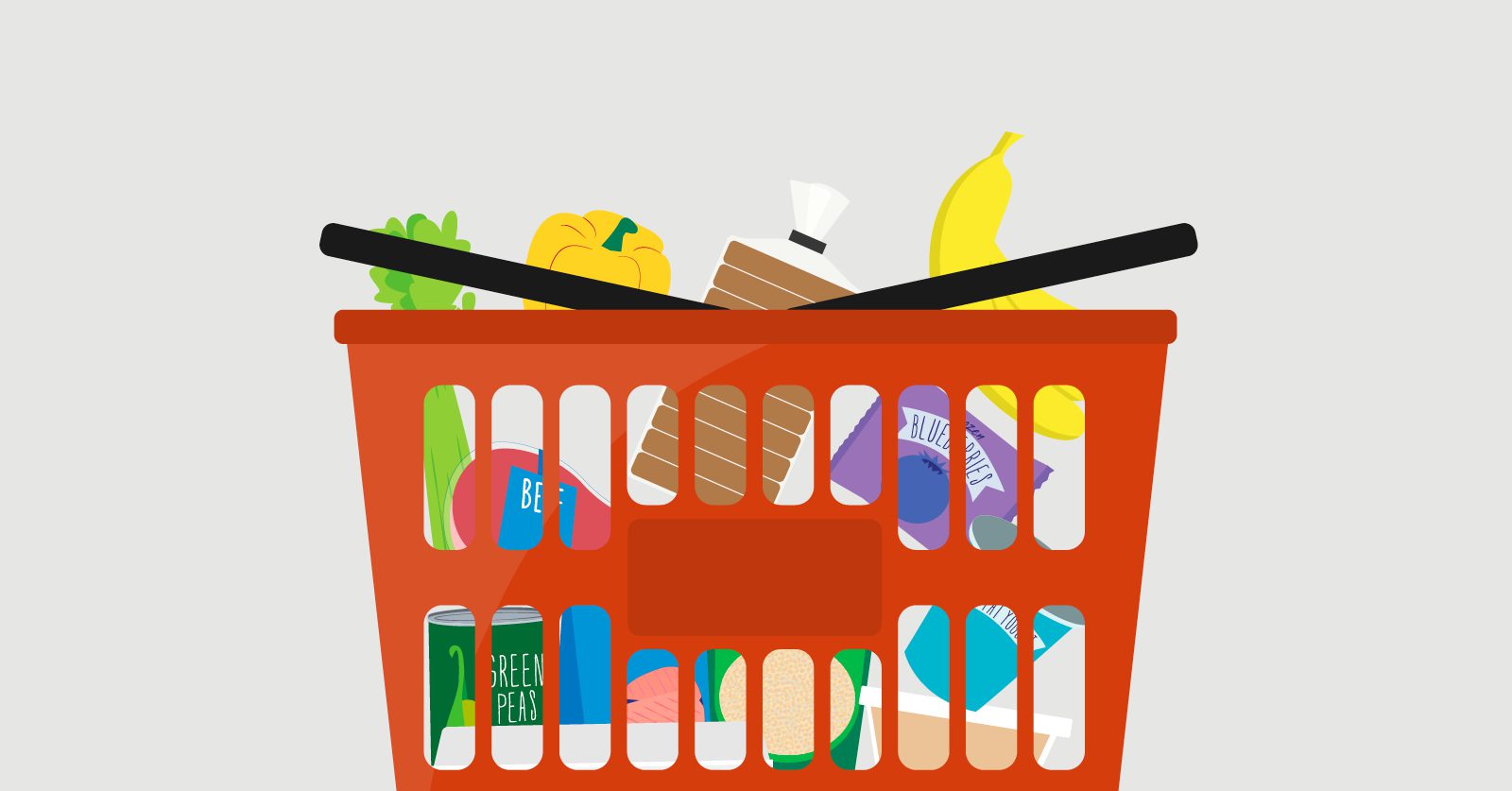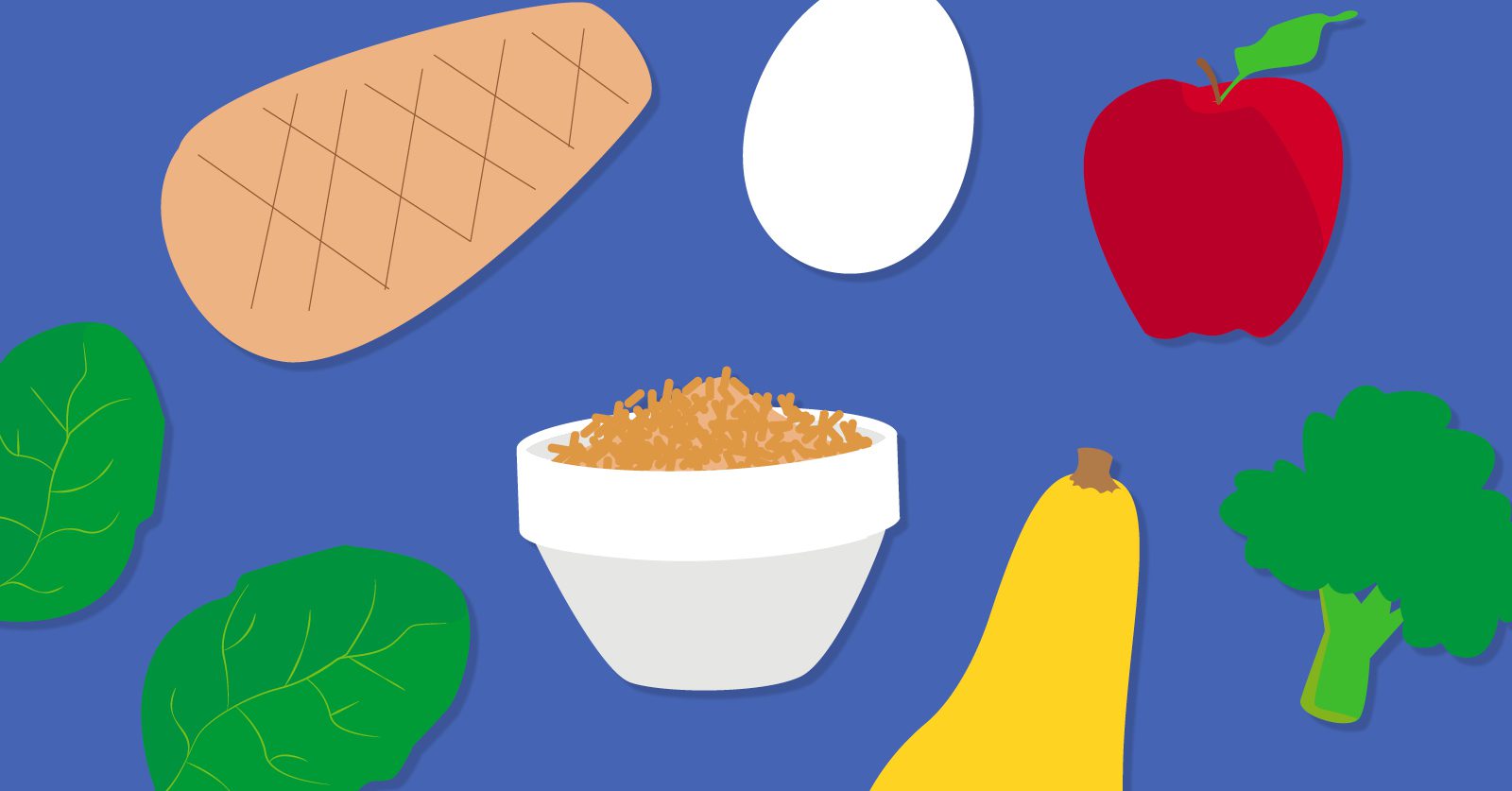WANT EVEN MORE HEALTHY IDEAS FROM SHAPE YOUR FUTURE?
If you’re just starting your health journey, we’re so proud of you. We know how intimidating healthy living can be, so we’re here to help! Here are a few basic principles of healthy eating to help you put nutritious food on your plate!
The Food Groups
Food groups are the building blocks of nutrition and a great blueprint for building healthy plates. There are no good foods or bad foods — just food groups! Here are a few suggestions from each food group to inspire your next meal:
Fruits
- Berries
- Melons
- Apples
- Bananas
- Oranges
Veggies
- Greens
- Peppers
- Onions
- Broccoli & cauliflower
- Carrots
Whole Grains
- Oatmeal
- Brown rice
- Whole wheat pasta, bread & tortillas
Protein
- Beans
- Eggs
- Lean meat & poultry
- Unsalted nuts
- Seafood
Low Fat Dairy
- Milk
- Greek yogurt
- Cheese

How To Eat Healthy
Healthy eating looks a little different for every family and every person. However, the basics of a balanced plate generally remain the same. Here are a few basic rules to follow as you plan dinner tonight:
- Start with a veggie. Veggies are packed full of fiber, vitamins and minerals that help your body run properly. If your body were a car, fruits and veggies would be the oil extending the life of your motor. A balanced plate is half fruits and veggies, so why not plan your meal around the veggies?
- Add a protein. Protein helps muscles and organs thrive — like gas in your car! Proteins should take up one fourth of your plate at every meal.
- Complete your plate with a grain. The remaining fourth of your plate is reserved for whole grains, which are the wheels that keep your body moving from one place to the next and keep you fuller for longer! Whole wheat toast or brown rice complement almost every type of meal, so choose your grain last.
- Head to the grocery store! If navigating the grocery store feels overwhelming, plan your weekly trip like this:
- 3 veggies: 2 for meals, 1 for snacking
- 3 proteins: 2 for dinners, 1 for breakfasts
- 2 whole grains
- 2 fruits
- 2 dips or spreads
Categorizing your grocery list by food groups can help you meal plan and keep you from overbuying! Select versatile veggies your family will enjoy. Then, buy fruits, grains and dips that double as sides or snacks!

A Few Healthy Staples
Now that you know how to build your plate, here are a few healthy staples to keep on hand:
- Spinach: Boost ANY dish with spinach. Add frozen spinach to soups, chilis and pastas and fresh spinach to salads and sandwiches!
- Chicken breast: Chicken is lean and versatile. Spice it up with this salsa chicken recipe, or whip up one of these slow cooker recipes.
- Brown rice: Brown rice is like a blank canvas. Use it as a tasty base for taco and salad bowls or season it for a healthy side dish.
- Eggs: Eggs are a great source of protein and a breakfast staple. Keep them on hand for meals and healthy baking!
- Seasonal fruits & veggies: At the beginning of each season, shop for in-season produce to keep on hand. Seasonal fruits and veggies tend to be more affordable and taste fresher!
See? Healthy living doesn’t have to be so hard! Like anything in life, it just takes a little practice. Looking for more ways to get inspired in the kitchen? Head on over to our recipe page for more healthy tips and tricks. Happy cooking!




